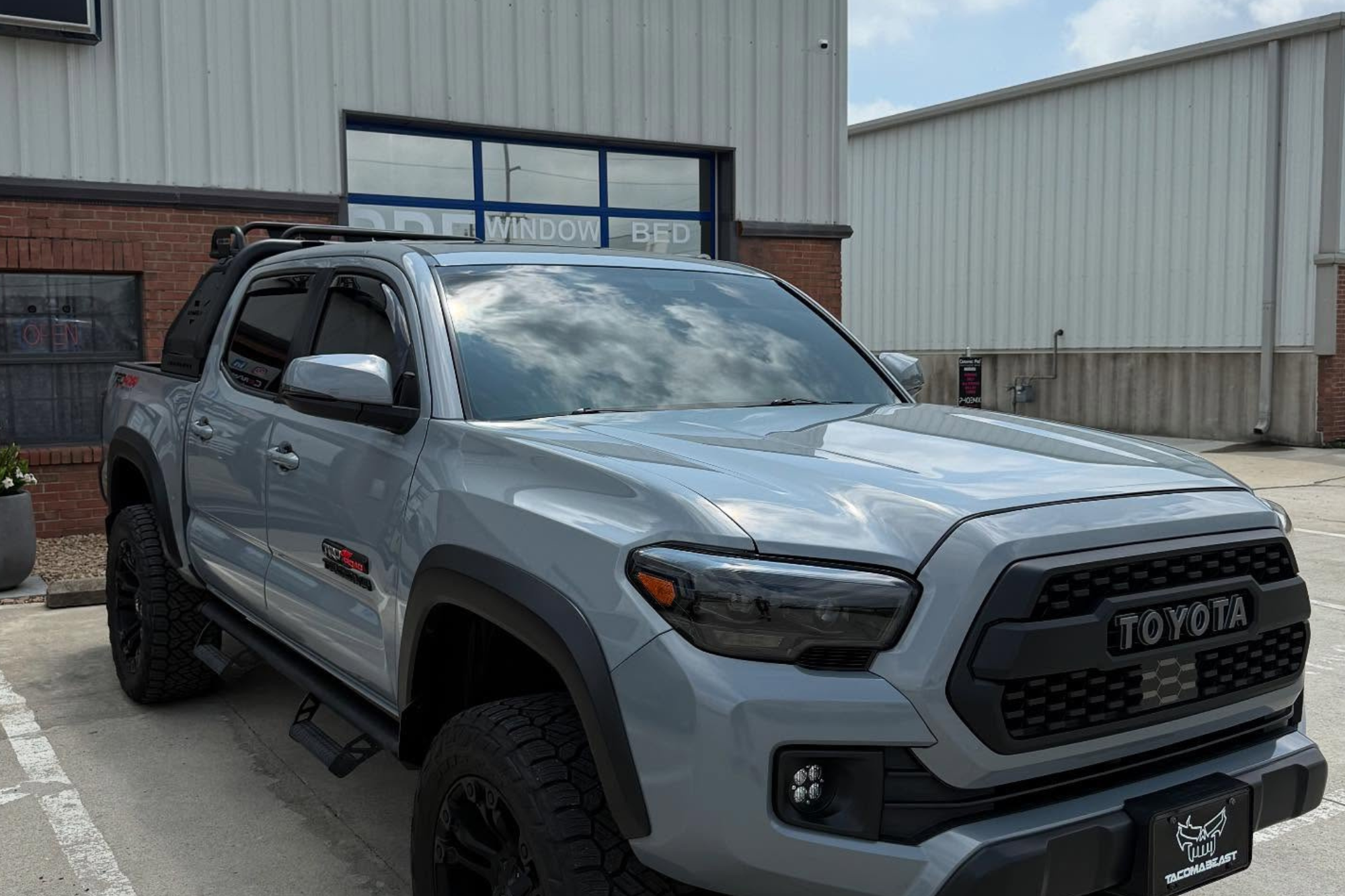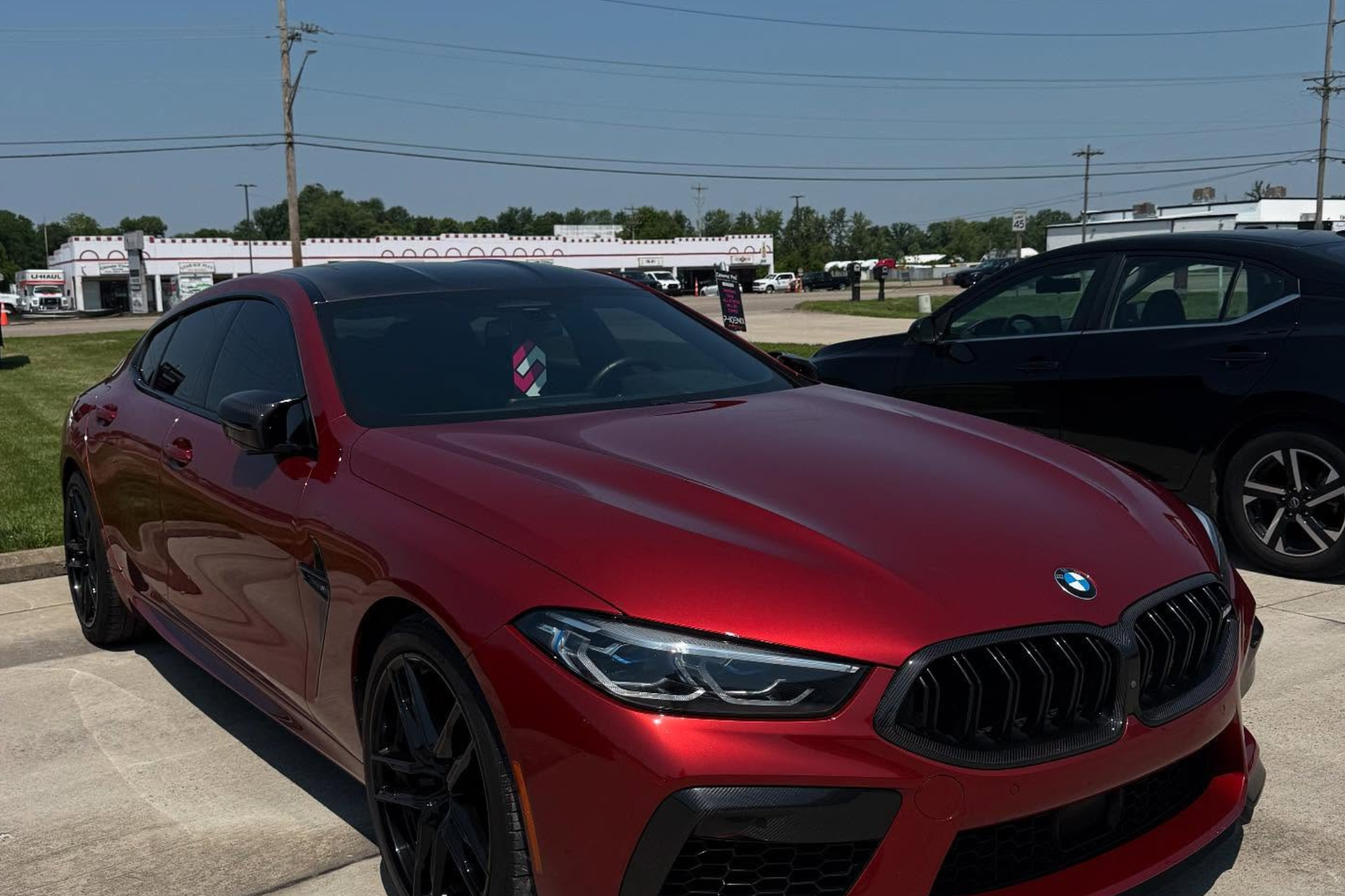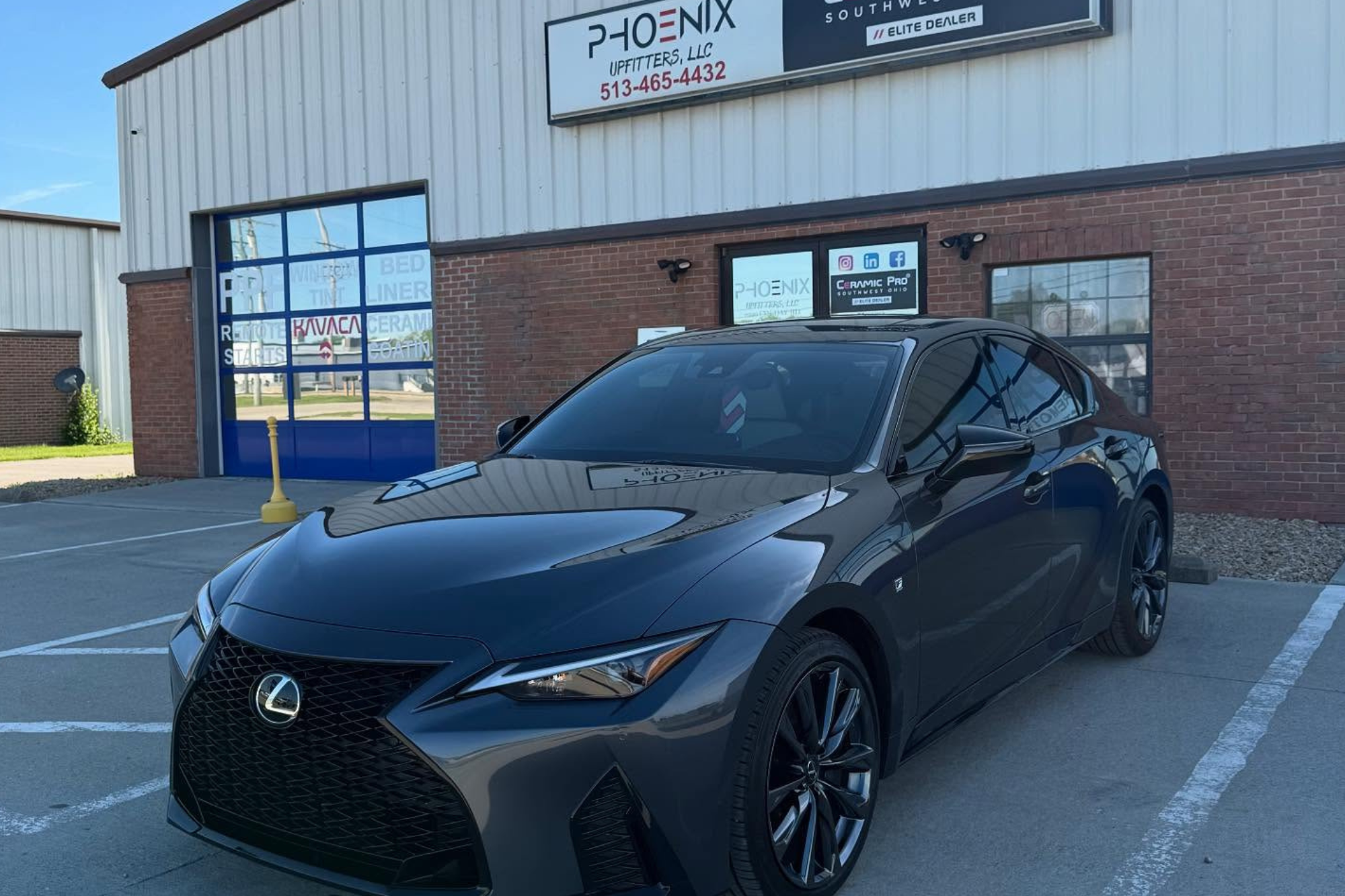Did you know that Paint Protection Film (PPF) not only shields your vehicle’s paint from scratches and chips but also offers UV protection that can prevent color fading? Understanding the full range of benefits that PPF provides can be a game-changer in preserving the appearance and value of your car. Learn more about how this cutting-edge technology can transform the way you protect your vehicle’s exterior for the long haul.
Key Takeaways
- PPF shields paint from scratches, chips, and environmental damage.
- Longevity benefits preserve vehicle appearance and resale value.
- Impact resistance protects against dings and scratches.
- PPF offers low maintenance and regenerative properties.
- Professional installation ensures precise coverage for optimal protection.
What Is Paint Protection Film?
Paint protection film, commonly known as PPF, is a clear thermoplastic urethane film applied to the exterior of vehicles to protect the paint from various types of damage. This protective film offers numerous benefits to your vehicle’s exterior. It acts as a barrier against stone chips, scratches, bug splatter, bird droppings, and other road debris, keeping your car looking pristine for longer.
One of the key advantages of paint protection film is its essential long-term protection. Unlike classical wax or sealants that wear off over time, PPF provides a durable shield that can last for years. This durability ensures that your vehicle’s paint remains pristine, reducing the need for frequent touch-ups or repaints. Additionally, the film is resistant to yellowing or cracking, maintaining its clarity and effectiveness over time.
The installation process of the paint protection film is vital to its performance. To ensure excellent protection, the film must be applied by a trained professional using precision techniques. The film is carefully cut and shaped to fit the contours of your vehicle, providing flawless coverage. Proper installation not only enhances the film’s protective capabilities but also ensures a visually appealing finish that blends seamlessly with your car’s paint.
Advantages of Paint Protection Film
Protecting your vehicle’s exterior with paint protection film offers a range of significant advantages that go beyond just cosmetic enhancements. One of the key benefits of paint protection film is its longevity benefits. This durable film acts as a shield against various environmental factors that can damage your car’s paint over time. By applying paint protection film, you’re investing in the long-term preservation of your vehicle’s exterior, ensuring that it maintains its pristine appearance for years.
Another advantage of a paint protection film is its impressive impact resistance. This protective layer is designed to absorb the impact of small stones, road debris, and other objects that may hit your car while driving. By having paint protection film installed, you can minimize the risk of scratches, dings, and other forms of damage caused by these external elements.
This impact resistance keeps your car looking pristine and helps maintain its resale value.
How Does PPF Work?
To understand how paint protection film (PPF) works, it’s essential to grasp its advanced technology and application methods. PPF is a durable, transparent film that’s applied to the exterior of a vehicle to protect it from damage caused by road debris, UV rays, bird droppings, and other environmental factors. The film is made from a thermoplastic urethane material that regenerates, meaning it can absorb impacts and then bounce back to its original form, effectively preventing scratches, swirl marks, and other minor damages.
During installation, professionals meticulously apply the PPF to the vehicle’s painted surfaces, ensuring a precise fit and smooth finish. The film adheres securely to the paint, creating a protective barrier lasting several years with proper care and maintenance. PPF is designed to be low-maintenance, requiring only regular washing and occasional waxing to preserve its appearance and protective properties.
The benefits of PPF extend beyond its durability and protective qualities. By maintaining the vehicle’s paint in pristine condition, PPF helps retain its resale value and keeps it looking pristine for longer. Additionally, the film is virtually invisible once applied, preserving the vehicle’s original appearance without altering its color or finish.
Types of PPF Finishes
When selecting a paint protection film finish, you’ll need to take into account the options available. Two primary choices are glossy or matte finishes, each offering different aesthetic qualities.
Additionally, you can opt for a clear film for invisible protection or go for a colored film to add a unique touch to your vehicle’s appearance.
Glossy Vs. Matte
For those seeking a sleek and polished look for their vehicle, the choice between a glossy or matte finish for paint protection film (PPF) can be an important decision to make. When considering durability, glossy PPF tends to be more resistant to scratches and swirl marks compared to matte finishes. However, matte PPF has the advantage of hiding imperfections better.
When it comes to installation, glossy films are generally easier to install due to their smooth surface, while matte films require more expertise to avoid visible seams.
Aesthetic preferences play a significant role in deciding between glossy and matte PPF. Glossy finishes provide a shiny and reflective appearance, enhancing the vehicle’s color and depth. On the other hand, matte finishes offer a more understated and unique look, often preferred by those seeking a subdued style.
In the long term, both glossy and matte PPF offer benefits such as protecting the vehicle’s paint from fading, UV damage, and road debris. Ultimately, the choice between glossy and matte PPF boils down to personal style preferences and the level of maintenance desired for your vehicle’s appearance.
Clear Vs. Colored
Consider the distinction between clear and colored finishes when exploring the various types of paint protection film (PPF) available for your vehicle. Clear PPF provides a transparent protective layer that’s nearly invisible on your car’s surface, offering excellent protection against scratches, chips, and UV damage. It’s a popular choice for those who want to maintain the original look of their vehicle.
Colored PPF, on the other hand, allows you to customize your car’s appearance with a range of color options while still benefiting from the protection it offers.
When it comes to longevity, clear PPF typically lasts longer than colored PPF due to its composition. The installation process for both types is similar, involving precise cutting and application by professionals to ensure a smooth finish.
Maintenance requirements for clear PPF are relatively low, requiring regular washing and waxing like the rest of your vehicle. Colored PPF may need specialized care to maintain its color vibrancy over time.
Choose the finish that best suits your style and protection needs.
PPF Application Process
To achieve the best results and ensure proper coverage, applying paint protection film (PPF) requires precision and skill. The installation steps are vital in ensuring your vehicle receives the full benefits of PPF, such as enhanced durability and protection against various elements. PPF is designed to shield your car’s paint from scratches, chips, and UV damage, making it a valuable investment for maintaining the aesthetic appeal and resale value of your vehicle.
When it comes to the application techniques of PPF, professionals use specialized tools and expertise to ensure a smooth and bubble-free finish. The durability of PPF hinges on how well it’s applied, with proper techniques playing a significant role in its effectiveness. By entrusting the application process to skilled professionals, you can rest assured that your vehicle will benefit from long-lasting protection and a flawless appearance.
Understanding the intricacies of the PPF application process can help you appreciate the level of care and attention required to safeguard your vehicle’s exterior. By following the recommended installation steps and relying on expert application techniques, you can enjoy the full range of benefits that PPF has to offer.
Maintenance Tips for PPF
Understanding how to maintain your paint protection film (PPF) properly is crucial for maximizing its longevity and effectiveness in safeguarding your vehicle’s exterior. To guarantee your PPF continues to provide excellent protection, follow these maintenance tips:
Cleaning Techniques: Regularly wash your vehicle with a pH-neutral car shampoo and a soft microfiber wash mitt. Avoid using abrasive sponges or brushes that could scratch the PPF. Gently hand-dry the film with a clean microfiber towel to prevent water spots.
Preservation Methods: Apply a high-quality PPF sealant or spray wax every few months to sustain the film’s hydrophobic properties and enhance its durability. This will also help prevent contaminants from bonding to the surface.
Damage Prevention: Avoid parking your vehicle under trees or near construction sites where it could be exposed to tree sap, bird droppings, or debris. Additionally, be cautious when fueling up to prevent gasoline spills on the PPF, as these can cause damage.
Longevity Strategies: Consider using a ceramic coating on top of the PPF for added protection and ease of maintenance. Regularly inspect the film for any signs of peeling or lifting, and address any issues promptly to prevent water and dirt from getting underneath.
PPF Vs. Ceramic Coating
Comparing paint protection film (PPF) and ceramic coating can help you make an informed decision on the best option for preserving your vehicle’s exterior finish. Let’s explore the durability comparison and appearance differences between these two popular automotive protection methods.
Durability is a key factor when deciding between PPF and ceramic coating. PPF is a thicker, more sturdy material that provides superior protection against rock chips, scratches, and other external hazards. It’s commonly recommended for individuals seeking a higher level of defense for their vehicle’s paintwork.
On the other hand, ceramic coatings offer excellent chemical resistance and can last for several years when properly maintained. While they may not provide the same level of impact protection as PPF, ceramic coatings are known for their long-lasting shine and hydrophobic properties.
When it comes to appearance, PPF and ceramic coatings offer distinct differences. PPF is virtually invisible once applied to the vehicle, maintaining the original paint color and finish. This makes it an ideal choice for those who want protection without altering the aesthetics of their car.
Ceramic coatings, on the other hand, can enhance the gloss and depth of the paint, giving the vehicle a showroom-like finish. However, they may slightly alter the appearance depending on the specific product used.
Understanding these durability and appearance variations between PPF and ceramic coatings is essential in selecting the best option to safeguard your vehicle’s exterior.
Cost Considerations for PPF
Considering the financial aspect of investing in paint protection film (PPF) for your vehicle is important for making an informed decision on this automotive protection method. When evaluating the cost of PPF, you must factor in both the initial investment and the long-term savings it can provide.
The initial investment for PPF can vary depending on the size and type of vehicle, as well as the quality of the film. Higher quality films may come at a higher price but offer better durability and protection.
Installation expenses are also part of the cost considerations for PPF. While some car owners opt for DIY kits to save on installation costs, it’s highly recommended to have PPF professionally installed to ensure proper application and coverage. Professional installation can impact the overall cost but ensures a higher-quality finish and longevity.
Durability factors play a significant role in the cost-effectiveness of PPF. Investing in a durable film may initially cost more but can result in long-term savings by reducing the need for frequent reapplications or repairs. High-quality PPF can withstand environmental elements, road debris, and UV exposure, providing extended protection for your vehicle’s paint job.
Investing in paint protection film is like adding an extra layer of armor to your vehicle, safeguarding it against the elements, and preserving its pristine appearance.
With PPF, you can enjoy peace of mind knowing that your car’s paint is protected from scratches, chips, and other forms of damage.
Remember, an ounce of prevention is worth a pound of cure when it comes to maintaining your vehicle’s beauty and value.






